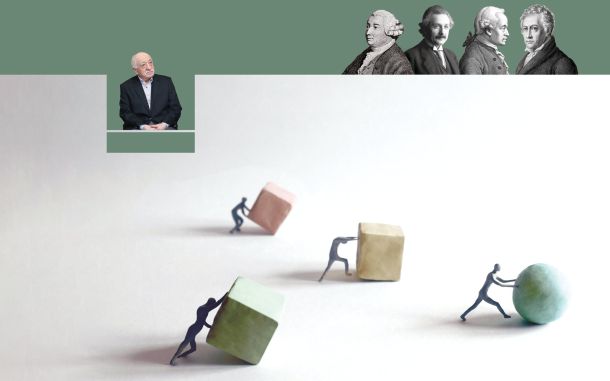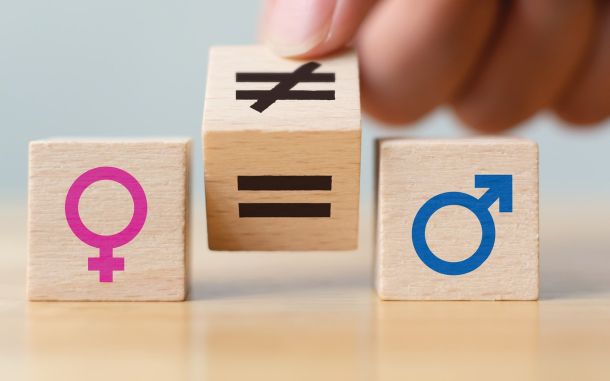The “Powers” of Ignorance

In This Article
-
From the perspective of the constructivist theory of learning, the best scenario for a learner is to be the architect of his/her own knowledge palace.
-
In old times when accessing knowledge was difficult, people who appreciated knowledge used to get very happy when they attained it. Today, we can access knowledge in seconds, yet we do not appreciate it.
-
The more learners see knowledgeable people as only “depositories of information,” the more damage is done to a productive and meaningful teacher-learner relationship.
As an instructor of statistics, I sometimes cannot help but explain the phenomena of the social sciences through mathematical expressions. This is especially true when there is almost complete correspondence between the two. One such topic is the “powers” of ignorance. When I say “powers,” I obviously do not mean how “mighty” ignorance makes a person. I mean the exponential expressions of ignorance:
Ignorance to the power of one (ignorance1);
Ignorance to the power of two (ignorance2);
Ignorance to the power of three (ignorance3).
Powers of ignorance
Let us start with the simple definitions of these three powers:
Ignorance1: Does not know;
Ignorance2: Does not know AND does not know that s/he does not know;
Ignorance3: Does not know AND does not know that s/he does not know AND insists that s/he does know.
Among the three, the first power is the most powerless in terms of leading the person to mistakes. The person is aware that s/he does not know. The solution to this case is simple: the person would go after the needed knowledge and acquire it, remedying this form of ignorance.
The second power is not that bad, either. The person does not know AND is not aware of the knowledge s/he lacks, either. Therefore, this person, when alerted to the necessity and existence of the knowledge in question, would acquire it, successfully ending the ignorance. In this sense, this power is also not that powerful in terms of leading the person to mistakes.
The third power is the most powerful at fooling its owner. The person does not know AND does not realize that s/he lacks certain knowledge. What is more, when alerted to the necessity and existence of the knowledge in question, s/he insists that s/he has nothing to learn. As you can tell, the ignorance cannot be eliminated easily—if at all—in this case. Such ignorance cannot be overcome by alerting the person to the knowledge in question and/or providing it. This is an attitudinal problem that “guards” the person against learning.
Now, let us return briefly to the math. Just as the magnitude of the difference between the consecutive powers of a mathematical entity increases as the powers increase, the differences between consecutive powers of ignorance are also different. For example, while the difference between the first power of two (21) and its second power (22) is two (four minus two), the difference between the second power (22) and the third (23) is four (eight minus four). Likewise, there is a bigger leap in the severity of the problem from the second to the third power of ignorance, compared to the difference between the first and the second.
Known unknowns vs. unknown unknowns
I believe this hierarchical definition of ignorance might provide some insight into the relationship between the teacher and the learner. From the perspective of the constructivist theory of learning, the best scenario for a learner is to be the architect of his/her own knowledge palace. In this approach, the teacher is a facilitator of the learning process while the learner builds his/her knowledge palace piece by piece. For a learner who smoothly goes through this process, the first power of ignorance can easily be eliminated without much assistance, especially in this information age. In other words, in this kind of ignorance, there are “known unknowns” that can be learned.
Some initial guidance might be needed to eliminate the second power of ignorance. The learner might successfully decorate the existing rooms of her/his palace by herself/himself, yet might be unaware that there might be brand new rooms that can be added. At this point, the teacher might provide guidance and vision to the learner, so that s/he might start sailing in these uncharted territories. Once new land is discovered, the teacher might return to the role of facilitator. While there are “unknown unknowns” in this case, there is no resistance to the realization and acknowledgement of this situation by the learner.
The biggest challenge we face nowadays is undoubtedly around the third power. The teacher facing the third power of ignorance is helpless in helping the learner. In addition to “unknown unknowns”, there is this denial of the “unknowing”. In old times, the difficulty in overcoming ignorance was mostly about accessing knowledge. People who appreciated knowledge used to get very happy when they attained it. They also mostly exhibited the attitude that the more they learned, the more they realized how ignorant they were. In this sense, it is very odd that we can now access knowledge in seconds, yet we do not appreciate it. Nor do we have the wisdom that the more we learn, the humbler we should become about our knowledge.
Such an attitude also has a high potential of hurting the teacher-learner relationship, since the learner denies the fact that s/he sometimes needs guidance. Such learners only seek “depositories” of information, with the thinking that they, by themselves, can correctly and sufficiently process and digest all the information taken in. In this sense, they are closed to any advice, guidance, perspective, or vision provided by the teacher. Their approach implicitly says, “Just give me the information I am asking for and shut up!” This is where wisdom is lost between generations.
The missing link: wisdom
This might remind some readers of movies or TV series that depict the wisdom exhibited by a Far Eastern master of martial arts. The master would accept a Western person as his apprentice. Yet, he asks the apprentice to do extremely difficult and exhausting chores that are seemingly unrelated to the martial arts. Moreover, these chores appear as if they are geared towards the comfort of the master. Yet, as the apprentice proceeds in her/his training, s/he realizes how vital those chores have been in acquiring the necessary skills as well as attitudes, such as stamina, perseverance, and patience. Only then does s/he realize that it should be the master, not the apprentice, who defines the format of the master-apprentice relationship.
The more learners see knowledgeable people as only “depositories of information”, the more damage is done to a productive and meaningful teacher-learner relationship. Learners start to think that the second they acquire the information they lack, they become “even” with their teachers. And this exactly is the way of thinking that is a major source of the third power of ignorance.
Let us give a simple and practical example to illustrate this phenomenon. Think of a learner who wants to cook a dish. In response, the teacher provides the learner with the full list of ingredients for the dish. The learner, in turn, adds this to her/his library of information. As a second step, the teacher attempts to explain how and when each ingredient should be added to the pot, at what heat the dish should be cooked, and suggestions to add more flavor, etc. However, the learner declines this offer, claiming that s/he can handle these by herself/himself. Just like in this example, obtaining information about a topic is just the beginning. Applying this information to various situations, analyzing or synthesizing it, and comparing it with similar information are examples of tasks that require experience and are more important than simply depositing unprocessed information into one’s library. What is needed is to continue the learning process during these stages as well. This is only possible if the learner exhibits humility through awareness that s/he has yet learned little and keeps the channels of learning open.
Two disclaimers are in order here. First, this article is not to discredit learner-centered learning; rather, it seeks to highlight some points during the process where the teacher’s guidance and vision should play a critical role in the learner’s healthy progress in acquiring, digesting, and internalizing information. Second, it is not the intent here to imply that it should be the teacher alone who shapes the format of the learning-teaching process, and that the student should only be the object of it, as has been the case in many traditional educational systems. There is no doubt that a successful teacher will continually gauge the learner’s progress and gather constant feedback about the strengths and weaknesses of the learner and use these to provide proper guidance and vision.
It is crucial to help learners acquire the right attitude towards learning and knowledge. In an era where individuals are flooded with information and asked to mostly make pragmatic use of it, it is of the utmost importance to caution learners against the pitfalls of this approach and guide them towards successfully turning it into internalized knowledge. That would also bring about the wisdom and humility necessary for learners to continue to build their wonderful palaces of knowledge.









